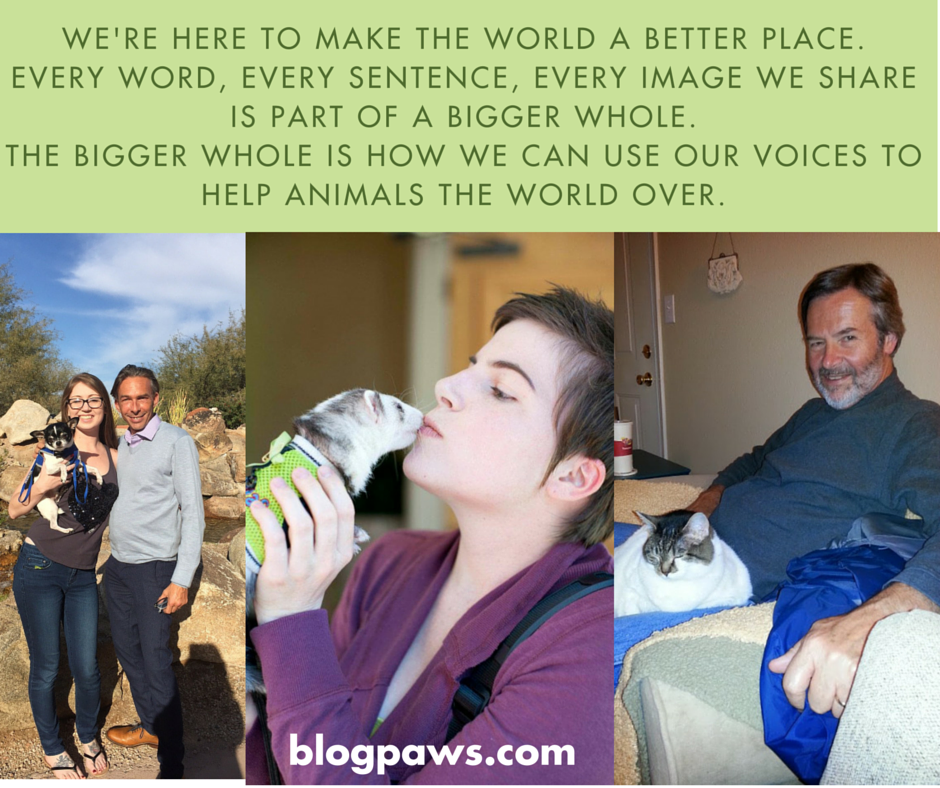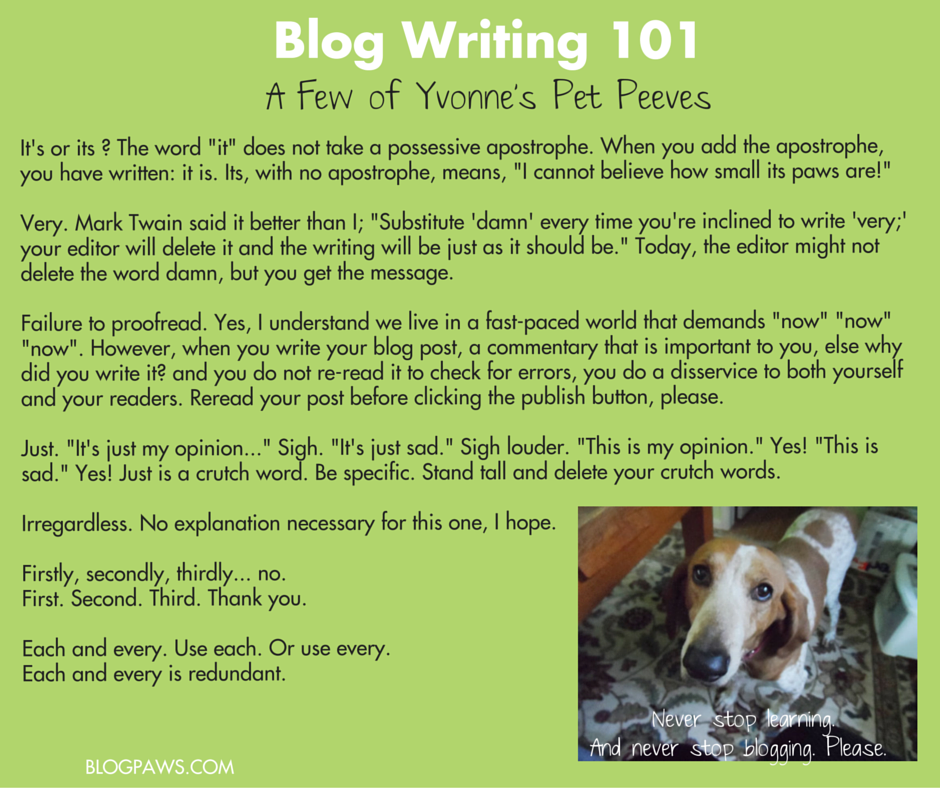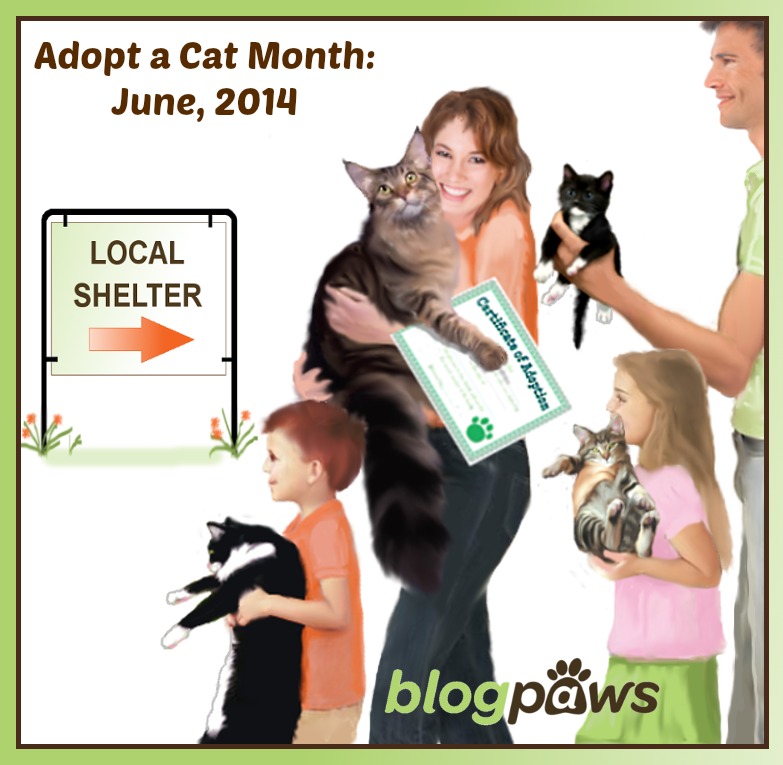Blog Post Writing 101
Blog posts are, in essence, articles or stories written to educate, entertain, inform, or sometimes accuse. The content in them is most often the voice of one person – the blog owner.
I have spent more than 10 years defending bloggers as writers. I have always had a sincere respect for the men and women who put themselves out there on almost a daily basis to share their thoughts and influence. No one gets into blogging because they want to be famous, at least, no one I know. Blogging is a tool and as such, it has become a resource to be both respected and accepted. The content in blogs matters. Let’s put that out there. WE matter.
As we grow, and I mean ‘we bloggers’… so, whether you identify yourself as a pet blogger or a lifestyle blogger, a food blogger or a humor blogger, whatever title you give your work counts… it’s incumbent upon us to always strive for professionalism. Our voices bring a collective message to thousands of ears across the country and the world. To continue being heard, we need to continue our education on writing and social sharing. There is no “I’m done. I don’t need to learn anymore.”
Learning is necessary on a daily basis.
Therefore, I am going to share a few of my pet peeves around writing. I see these issues popping up more and more, of late. It saddens me because I’ve been working extremely hard to show how professional our writing is, on blogs. When we fall down, and do not even know it, I feel as if I have failed. I have not put the message out loud enough: writing on a blog is and should always be on a professional level that meets journalistic standards.
Sidebar: for those who write in the voice of their pet, even you should pay attention to grammar and punctuation but I realize you are not striving to be journalists, so you get a pass. Everyone else, you are required to write proper English. Even if you’re not writing to influence. Words matter.
Here are my Top 10 Pet Peeves about Blog Post writing:
- It’s or its ? The word “it” does not take a possessive apostrophe. When you add the apostrophe, you have written: it is. So, it’s means “it is.” Its means, “I could not believe how small its paws were!”
- Very. Mark Twain said it better than I; “Substitute ‘damn’ every time you’re inclined to write ‘very;’ your editor will delete it and the writing will be just as it should be.” Today, the editor might not delete the word damn, but you get the message.
- Dense paragraphs. In the world of web writing, shorter is better. It’s a challenge sometimes to get the message across in 140 characters, but we all use Twitter and we all learn how to compromise. On a blog, shorter paragraphs is the way to post. People will move from paragraph to paragraph easier, when you separate them. Follow the lead of the experts in this case – Copyblogger (you know Pamela Wilson from Copyblogger is a keynote at BlogPaws, correct?), Social Media Examiner, and Content Marketing Institute. (you’ll want to click that last link – there is an amazing cheat sheet there for social shares)
- Failure to proofread. I will sigh here. My team knows that when I sigh, it means I’m either angry, frustrated, or both. Not a good way to be. Yes, I understand we live in a fast-paced world that demands “now” “now” “now”. However, when you write your blog post, a commentary that is important to you, else why did you write it? and you do not re-read it to check for errors, you do a disservice to both yourself and your readers. Perhaps you will not catch all errors, sometimes the eye fools us, but I do believe you will catch most. Reread your post before clicking the publish button, please.
- Broken sentences. This is inexcusable. If you add a photo and it breaks the text, you need to fix that. Don’t make me search for the end of your sentence. Also, if a photo is relevant to the sentence, don’t put it at the bottom of the post. Add the photo adjacent to the sentence it references, without breaking the sentence.
- Just. “It’s just my opinion…” Sigh. “It’s just sad.” Sigh louder. “This is my opinion.” Yes! “This is sad.” Yes! Just is a crutch word. Be specific. Just leave that word out.
- Also, “I think…” Either you know or you don’t know. Saying, “I think” is wishy-washy. Yes, there may be times you want to note that you think, but when you’re stating an opinion, make it strong and purposeful! Tell me what you think, don’t tell me you think. I assume you are thinking as you are writing.
- Irregardless. No explanation necessary for this one, I hope.
- Firstly, secondly, thirdly… no. First. Second. Third. Thank you.
- Each and every. Use each. Or use every. Each and every is redundant and unnecessary.
There are other pet peeves I could share. However, I will save them for a later post.
My point is – you are a writer. When you write in your blog, you establish yourself as someone who is serious about what s/he shares with the world. I implore you to (a) always be in learning mode, take creative writing classes, refer to your Strunk and White from time to time and (b) if you find errors in others’ writings, don’t announce to the world. Share what you found in a private note or email, respectfully.
We’re here to make the world a better place. Every word, every sentence, every image we share is part of a bigger whole. The bigger whole is how we can use our voices to help animals the world over. I am in awe of your blogs. When I encounter these issues, I cringe a little. I do know that all of our bloggers are working hard to be heard and it’s my strongest desire to help you make that happen.
I hope to see you at this year’s event in Phoenix. We have limited tickets available. Register today and say hello as I scurry past you on my way to this or that. Or, if you see me at a meal, stop and chat.





